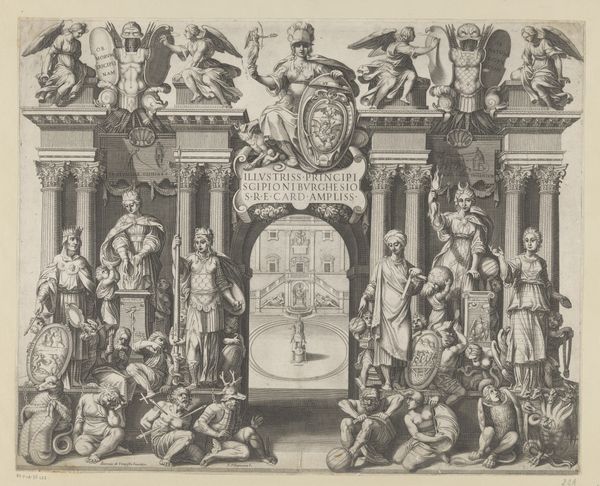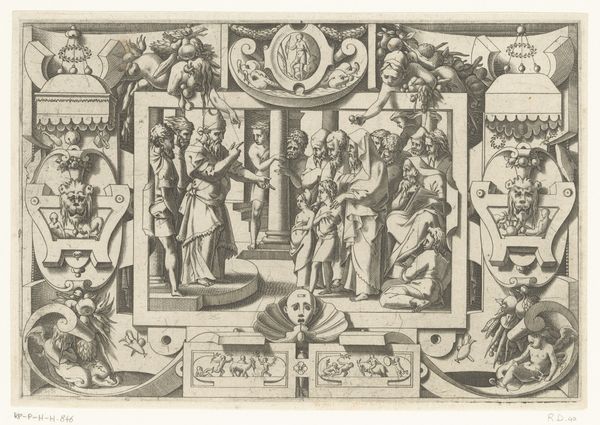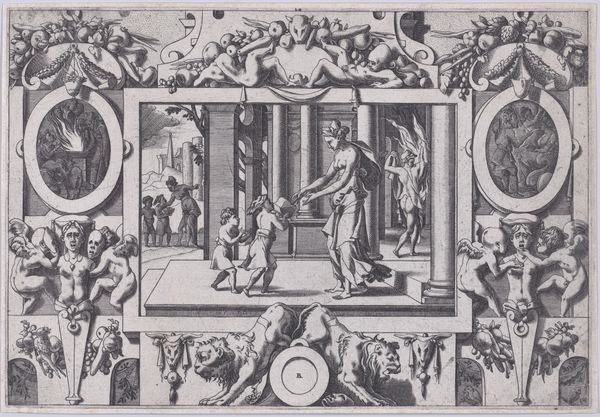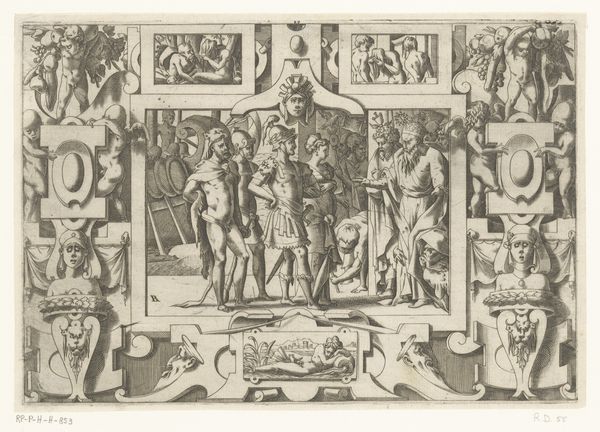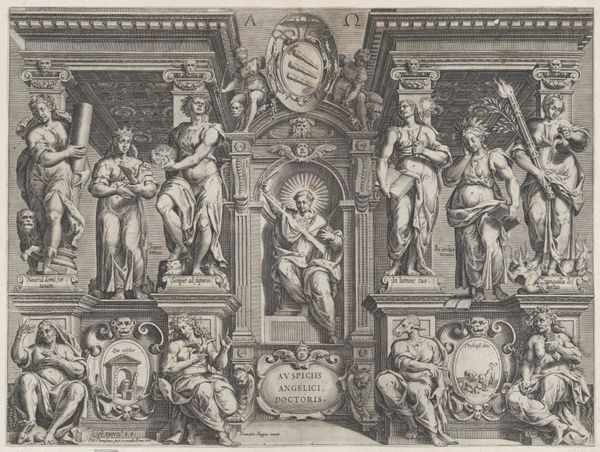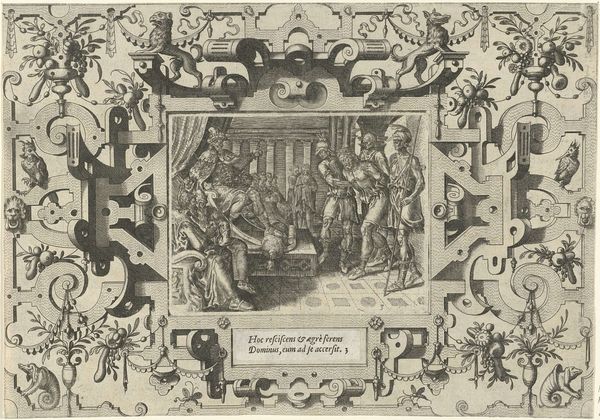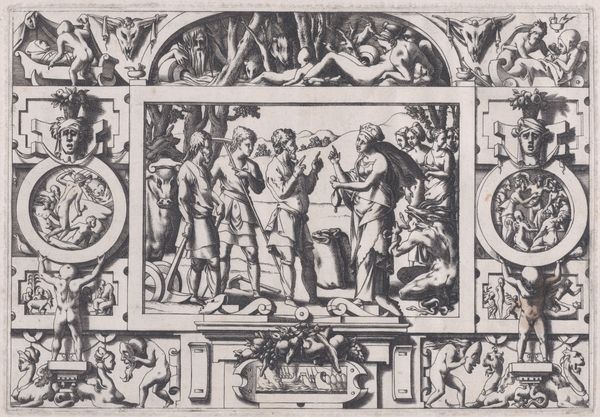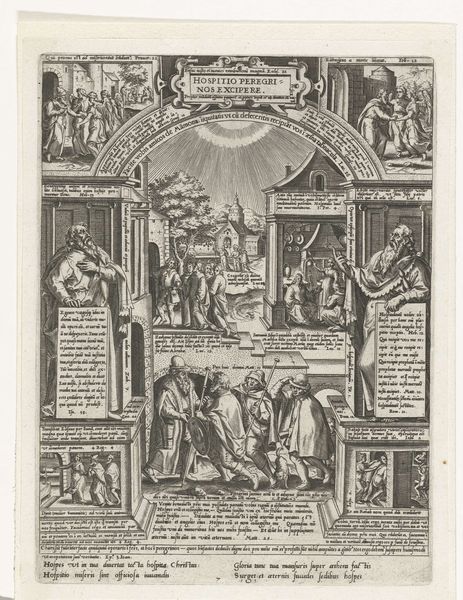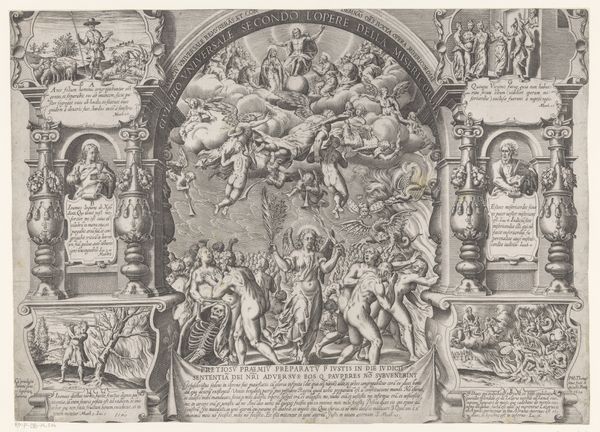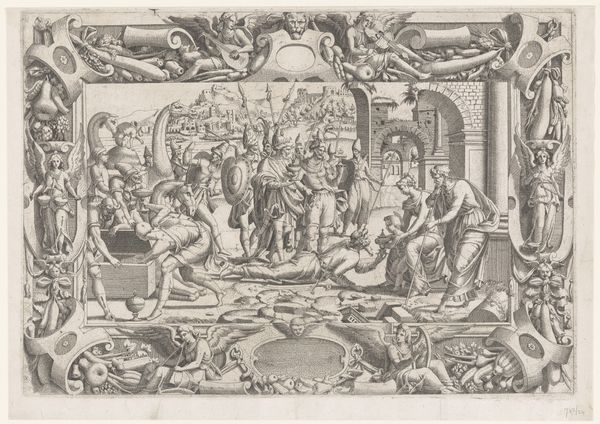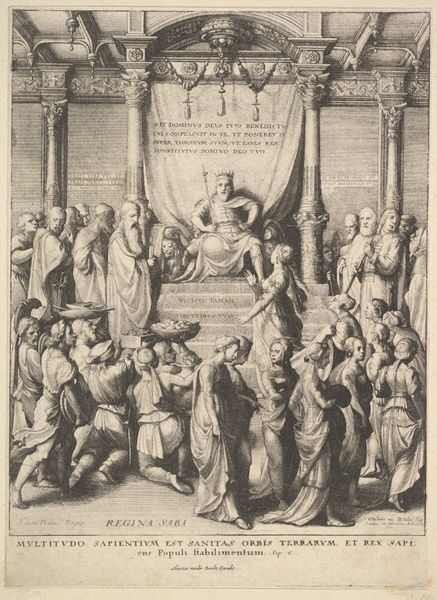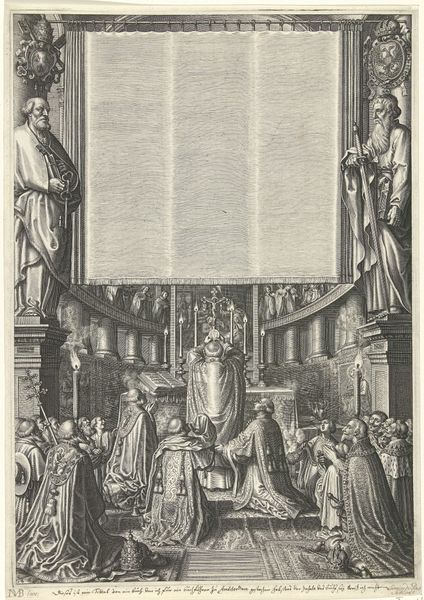
Jason Arrives at Colchis (Enfin parvint jusqu'en Colchis Jason...), from "Jason and the Golden Fleece" 1563
0:00
0:00
drawing, print, engraving
#
drawing
# print
#
mannerism
#
history-painting
#
italian-renaissance
#
engraving
Dimensions: Plate: 6 5/16 × 9 3/16 in. (16 × 23.3 cm) Sheet: 9 3/16 × 13 1/16 in. (23.3 × 33.2 cm)
Copyright: Public Domain
Curator: This engraving, dating back to 1563, is titled "Jason Arrives at Colchis," part of the series "Jason and the Golden Fleece." René Boyvin is the artist. What strikes you immediately? Editor: It feels…dense. Like a party that’s overstayed its welcome, but you’re trapped because your keys are missing. All those figures pressed together. Is that tension or just bad seating? Curator: Boyvin created this during the Mannerist period. The density, the exaggerated poses—they're deliberate choices, pushing against Renaissance ideals of balance and harmony. Colchis was the legendary land Jason sailed to in his quest, but notice the figures framing the scene: they're a riot of gods and grotesque ornamentation, almost suffocating the central narrative. This piece definitely feels like a statement on the concept of heroism itself. What social or political dimensions might Boyvin be alluding to, do you think? Editor: Well, the faces seem interchangeable, like a casting call for extras in a war movie. And that frame! It’s like the story is caged. Perhaps it’s questioning the established notions of the hero, suggesting their exploits are confined, or maybe manipulated, by powers greater than themselves, just part of a game of thrones or some obscure religious cult ritual. Is he taking aim at the political landscape of the era? Curator: Absolutely, the period of its creation, rife with religious conflicts and dynastic power plays, cannot be ignored. The visual language Boyvin employs mirrors these tensions, challenging viewers to confront the complexities underpinning mythic tales. Note how women are represented here: their agency and autonomy are significantly diminished. This subjugation isn't merely an artistic quirk but rather reflective of deep-seated patriarchal structures influencing social interactions during that time. Boyvin’s "Jason Arrives at Colchis" does not only invite a deconstruction of established heroic narratives, but prompts a critical interrogation into existing gendered hierarchies too. Editor: I'm left wondering what happened to Jason after that party. Did he ever find those keys, or was he doomed to wander the mythological buffet forever? More seriously, there's a claustrophobic energy here. Curator: Indeed. It’s a potent snapshot of an era grappling with shifts in power and ideology. Editor: For me, it's a reminder that even epic stories can feel awfully cramped sometimes.
Comments
No comments
Be the first to comment and join the conversation on the ultimate creative platform.
